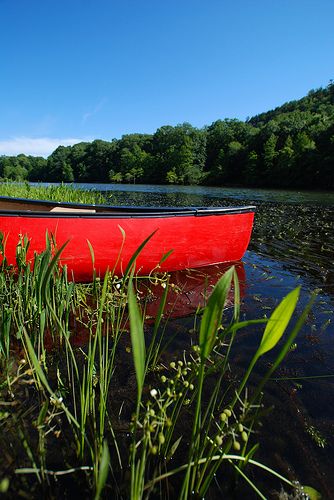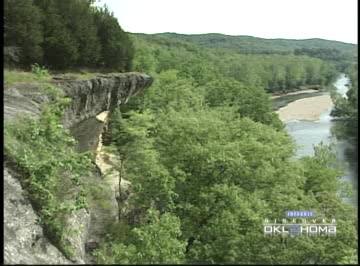Canoeing is a great way to enjoy the Oklahoma outdoors. Not only can you get to hard-to-reach fishing areas, but also you'll be treated to unobtrusive wildlife viewing. With no noisy, smelly gasoline engines, canoes allow us to get close to streamside wildlife. They’re also easy to portage over shallow riffles and low-water bridges, and, compared to motorboats, they don’t cost much. If you’d like to see the outdoors from a new perspective, try canoeing one of these Oklahoma streams.
Illinois River
The Illinois River, in northeast Oklahoma, may be the state’s most popular stream for canoeing. A gentle, shallow stream, the Illinois River is great for novice paddlers. It is also easy to get to and features several outfitters along its course. While the portion of the river above Lake Tenkiller is preferable for canoeing, I have encountered paddlers in the Lower Illinois River. Due to water discharges from the dam, however, this section’s flow is more irregular and given to dramatic fluctuation.
Glover River
Floating the Glover River is quite a different experience from paddling the Illinois. The Glover is a wilderness river, very remote and offering no accommodations in the way of canoe outfitters, shuttle services and the like. However, if you’re serious about canoeing, you shouldn’t miss it.
The last major free-flowing river in Oklahoma, the Glover isn’t affected by dams or water releases. There are, however, several low-water bridges and stream crossings where you’ll have to portage, but the reward for your effort is a day likely spent in solitude, never seeing another soul along the river.
Due to the topography of the area, the Glover’s water level rises very quickly in the event of heavy rainfall, so take note if you’re planning a trip here during the rainy spring or fall seasons. Also be sure to check permit requirements before you go; a Three Rivers WMA permit is needed unless you launch and exit at a public access and stay in your canoe the entire time.
Mountain Fork River
The Mountain Fork River is another remote, scenic stream. The river above Broken Bow is very rocky, with scattered boulder fields, which can be tricky to navigate during high flows. Access is easy, however, as much of the river parallels U.S. 259 and offers several turnouts. You may want to take along a fishing rod – the smallmouth bass, walleye and sand bass action can be excellent during the spring.
Below Broken Bow Lake, the river is quite different. Within Beavers Bend State Park, there is a two-mile loop where you can rent a canoe and float these calm, cold waters. This stretch of the river can be very crowded during the summer.
Farther downstream, you can access the river below the Re-regulation Dam at Mountain Fork Park and float from here to the U.S. 70 bridge, a distance of about three miles. More adventurous paddlers may choose to float another 15 miles beyond this point and take out at the Little River.
Eagle Fork Creek
Eagle Fork Creek is a small, winding stream near Octavia, in southeast Oklahoma, which attracts experienced canoeists and kayakers after periods of heavy rainfall. It’s a remote, scenic stream offering solitude and great fishing, but heavy rain can quickly turn this quiet creek into a raging river.
There are numerous hazards in the form of whitewater, ledges, waterfalls and a couple of dams located at the low-water bridge off U.S. 259 above Octavia. These dams can be dangerous due to the heavy currents they produce and are best avoided by getting out of the water and going around them. The Eagle Fork can be a fun adventure, but only for those experienced in whitewater paddling.
Try canoeing an Oklahoma stream or river the next time you’re craving the outdoors. You may not want to go back to those noisy motorboats.




































